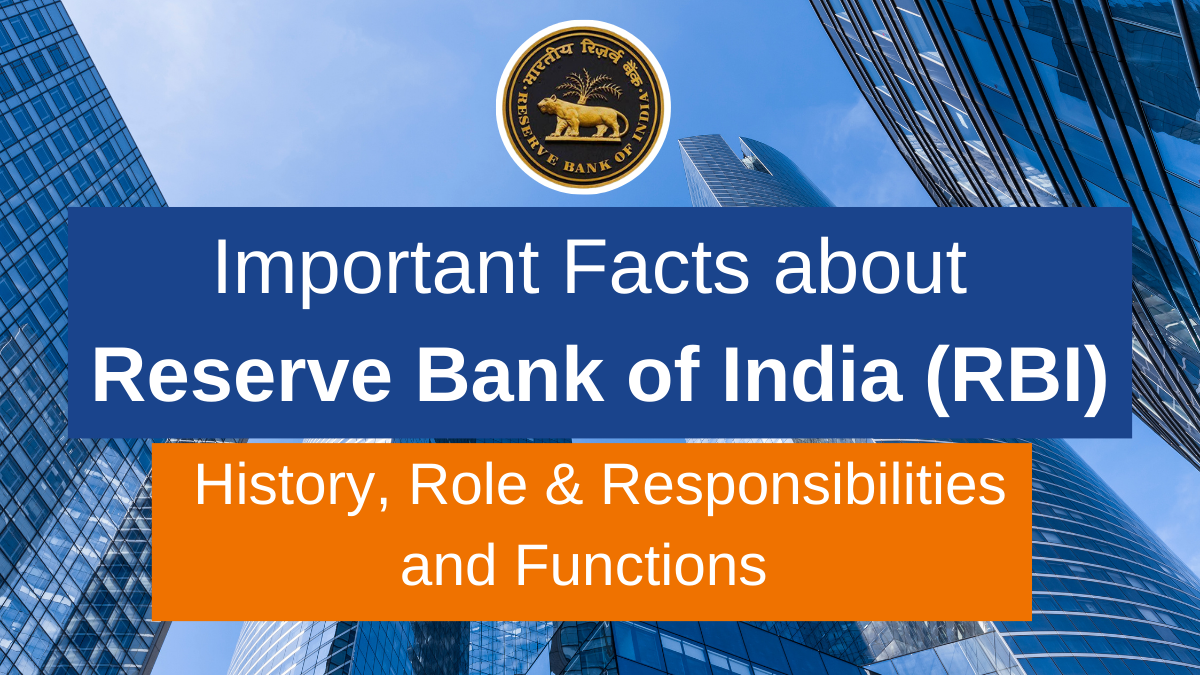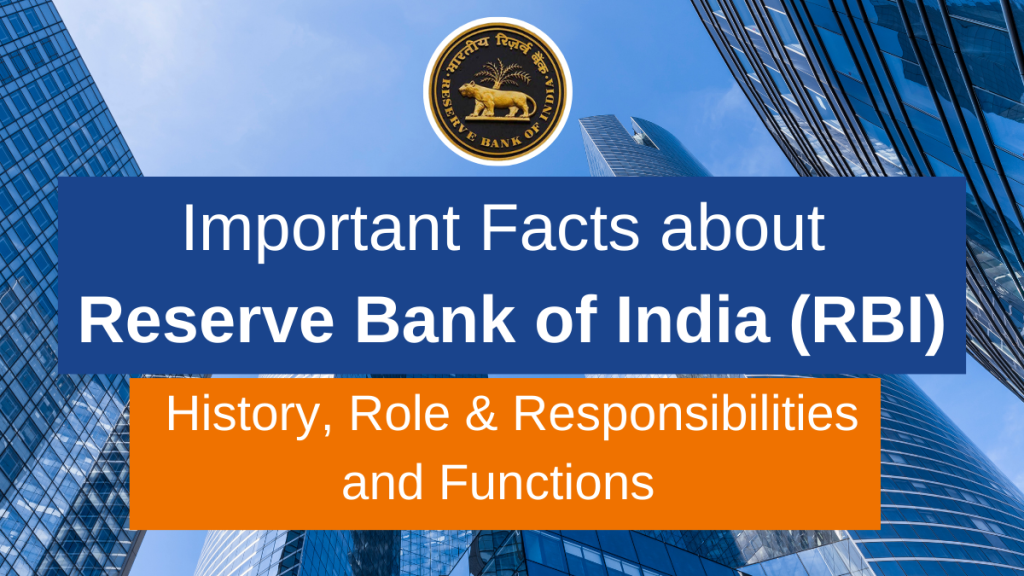Read here about the Reserve Bank of India, its role and functions. Also, learn about how to prepare for the RBI Grade B interview and what mistakes to avoid in your RBI Grade B Interview.
Introduction
The Reserve Bank of India (RBI) is the central banking institution of India, responsible for regulating and supervising the country’s monetary and financial systems. It was established on April 1, 1935, in accordance with the Reserve Bank of India Act, 1934. The RBI plays a crucial role in maintaining financial stability, controlling inflation, and ensuring the overall economic development of the country.

Important Facts About the RBI
Source: Internet
The RBI headquarters is in Mumbai, Maharashtra and the RBI Grade B Chairman is Mr. Shaktikanta Das. It consists of 21 members’ central board of directors, the Governor, four Deputy Governors; two finance ministry representatives, ten Government nominated directors representing India’s economy and four directors representing local boards (Mumbai, Kolkata, Chennai, and New Delhi ). Each local board consists of five members who represent regional interests. It is a member bank of the Asian Clearing Union and plays an important role in the development strategy of the Government Of India.
At its inception, it had a capital of rupees 5 crores, and the ownership of all the share capital was initially in the hands of non-government shareholders. However, to prevent the concentration of shares in a few hands, the RBI was nationalized on January 1, 1949. As a result of nationalization, the RBI became a fully government-owned entity, and its status changed from being a privately-owned institution to a statutory body that operates under the guidance of the Indian government.
Reserve Bank of India Preamble
The Preamble of the Reserve Bank of India outlines the fundamental roles of the institution as follows:
“to regulate the issue of Bank notes and keeping of reserves with a view to securing monetary stability in India and generally to operate the currency and credit system of the country to its advantage; to have a modern monetary policy framework to meet the challenge of an increasingly complex economy, to maintain price stability while keeping in mind the objective of growth.”
A Brief History of the RBI
Established in 1934 under the Reserve Bank of India Act, the RBI initially held private ownership but was nationalized in 1949, falling solely under the Indian Ministry of Finance. In 2016, the RBI Act was amended, instituting the Monetary Policy Committee (MPC) to determine interest rates. This committee comprises both RBI officials and government-appointed independent members, with the RBI governor holding the decisive vote during tiebreakers. In 2018, the RBI prohibited entities under its regulation from engaging with virtual currencies like Bitcoin. Though later clarifying its stance, a 2020 Supreme Court ruling challenged the RBI’s decision, citing a lack of demonstrated harm. This legal challenge emerged from the Internet and Mobile Association of India, representing affected cryptocurrency exchanges.
The RBI serves as the country’s apex monetary authority and is responsible for overseeing and regulating the monetary and financial systems. Its primary objective is to maintain monetary stability and foster economic growth while ensuring the stability of the financial sector. Some of the key roles and responsibilities have been listed below:
- Monetary Policy: The RBI formulates and implements monetary policy to control inflation and stabilize prices. It uses tools like the repo rate, reverse repo rate, and cash reserve ratio (CRR) to influence money supply and credit in the economy.
- Banking Regulation and Supervision: The RBI supervises and regulates banks, financial institutions, and non-banking financial companies (NBFCs) to ensure their sound functioning, stability, and compliance with regulations.
- Currency Issuance and Management: The RBI is the sole authority responsible for issuing currency notes and coins in India. It manages the supply, distribution, and quality of currency in the economy.
- Foreign Exchange Management: The RBI manages the country’s foreign exchange reserves and formulates policies to facilitate international trade and stabilize the exchange rate of the Indian rupee.
- Developmental Functions: The RBI promotes financial inclusion, develops the banking and financial infrastructure, and supports various developmental initiatives to enhance the economic well-being of the country.
- Regulation of Payment Systems: The RBI oversees payment and settlement systems to ensure secure and efficient electronic fund transfers, checks clearing, and other payment methods.
- Government’s Banker and Debt Manager: The RBI acts as the banker to the government, managing its finances, handling public debt, and implementing the government’s borrowing program.
- Research and Data Analysis: The RBI conducts economic research, compiles data, and publishes reports on various aspects of the Indian economy and financial markets.
13 Mistakes to Avoid to Become an RBI Grade B Officer
Besides all of the above functions it helps in the development of backward areas, maintaining economic growth and stability, promotion of credit to priority sections including rural and agriculture sectors, and promotion of export and industrial finance.
RBI Interview Preparation
Remember, the RBI Grade B interview is not just about testing your knowledge; it’s also an assessment of your personality, communication skills, and ability to handle real-world scenarios. Approach the interview with a positive attitude, genuine interest, and a willingness to learn.
Also Read
RBI Grade B Interview Questions & Experience: A Comprehensive Guide
A Complete Preparation Guide for RBI Grade B 2023
How to be calm and composed before your RBI Grade B exam?
& Many More..
To help you prepare 50% faster for competitive exams, ixamBee provides free Mock Test Series all the Current Affairs in English and Current Affairs in Hindi in the BeePedia capsules for GA Preparation. You can also get the latest updates for Bank PO, Bank Clerk, SSC, RBI NABARD and Other Government Jobs.
займ на яндекс деньги без привязки картызайм без паспортных данныхцелевой займ
